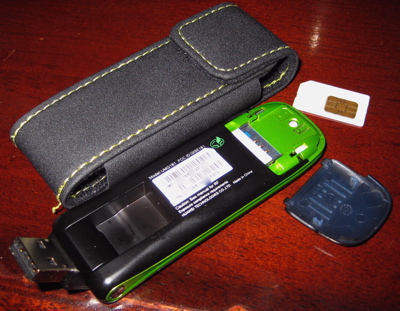
An article published by Macworld's Christoper Breen today said the iPad has the "power to compel change," and that it had "brought welcome changes" to his life.
Sadly, most of the "life changes" Breen spoke of were just new peripherals he added to make his iPad actually useable in his daily regimen.
Well, I too have been testing an iPad. But unlike Breen, I don't change my life according to my gear...I change my gear to suit to my life.
I'm also not in the habit of buying new furniture just so I can comfortably use a new gadget.
So for the last three weeks I've been on vacation touring around Eastern Europe. If you're a faithful Betanews reader, you may have noticed a paucity of articles from me recently...if not, I'll try to not be too offended. Anyway, for this tour, I equipped myself with the latest 2010 Macbook (2.4GHz Core 2 Duo, 2GB SDRAM) and a 3G iPad to test whether the iPad could actually "cannibalize" Apple's lowest-end notebooks by equaling or surpassing their functionality.
Since I was not spending any significant time planted in a single place, my main tests were for mobile usability: adaptability/versatility, durability/battery life, portability, and ease of use.
To make a very long story very short, The iPad does not threaten to replace the Macbook, and it is specifically because of all those additional "life changes" you make for the device.

1. All you need is ONE USB port
By only having the 30-pin "dock connector" port, the iPad immediately loses tons of functionality that the Macbook has built into it. Both in my work and in my free time, I absolutely need at least one USB port to import product photos and event videos. As Breen said in his article, to transfer your photographs to your iPad, you must add a $29 USB convertor and SD card reader just to be able to get your data on there, and then you're limited to 64GB of storage.
With a Panasonic Lumix DMC-LX3 (16GB SDHC,) my beloved Kodak Zi8, and 21 days, I shot 13,269 photos and 72 video clips. The total weight of all that content was 84.3 GB, and it included not only vacation photos, but also some freelance reporting stuff I captured while over there. With the iPad, an accessory to dump photos and videos is mandatory, and even then, the device has very limited storage. With the Macbook, I could transfer over USB, edit photos and videos, and not have to worry about conserving space.
2. SIM swapping problems
Even with AT&T's 3G connection and the sizable list of international roaming partners, you can't simply walk into a Tchibo or an O2 shop, pick up a pay-as-you-go SIM and pop it into the iPad. That's because the iPad's mobile user ID standard is the much less common MicroSIM module.

Before I left, I bought the no-contract T-Mobile WebConnect Stick pictured above because of its very easily accessible SIM slot, its friendliness with GSM standard connections, and because of the overall prevalence of T-Mobile's network in mainland Europe should I ever want to plug my phone's SIM card into it. Once more, it's a USB device compatible with Snow Leopard, and it makes finding a 3G connection much simpler.
3. The outdoor geek
People in Europe sit outside when the weather is nice, and even though they were evacuating Warsaw because of rising floods when I got there, and much of Slovakia was completely inaccessible for all the water, the weather was clear and sunny almost the whole time I was on vacation.
So I tried to use the iPad at various hotspot-equipped cafes in the region on these clear days. Outside, screen visibility typically vacillated between bad and retina-tearingly bad. At least when using the Macbook outside, I could angle the screen downward and reduce the glare as I typed. It is simply impossible to type on the iPad and not have it facing skyward, and using the iPad folder as a pseudo sun visor is not easy or fun.
Granted, any backlit notebook or smartphone without a specially treated screen is going to perform poorly outdoors, but as I said before, I was testing versatility and the iPad came up very short in this area.
4. Entertainment that doesn't work
Arguably the main point of Apple's IOS ecosystem is that it is highly customizable through its vast selection of user-installable applications. Many of the popular apps that people love to snuggle up to for entertainment in the U.S, such as ABC Viewer and Netflix, simply do not work in other countries. Further, content available in the iTunes store varies seriously from country to country, and in some places it's scarcely even worth trying to connect to it. I talked to an employee at a licensed Apple reseller in Prague, Czech Republic, and he said they don't sell iTunes gift cards because international licensing rules block so much content from their users. While the same holds true for the Macbook, the options for content acquisition and storage on that platform are much more varied.
5. At the end of the day
That's when the iPad was handy for me. At the end of the day after sightseeing, after writing, and after dumping photos and videos, I could kick back in a hotel and surf the Web one browser tab at a time, or play some iPad-formatted games while recharging the Macbook's "10-hour" battery (which typically lasted for a good 7 hours.) The device at least provides a fun and elegant experience when used in such a way.
So if you are torn between getting a top-of-the-line 64 GB 3G+WiFi iPad for $829, or the bottom-rung 2.4GHz, 250GB Macbook for $999. Go with the Macbook.
It does not require a change of life.
Copyright Betanews, Inc. 2010







